 Nepal is a country that is famous over the world for its stunning cuisine, rich cultural heritage, and natural beauty that goes beyond comparison. Whether you are visiting Nepal for the first time or returning to absorb more of the multitude of pleasures that this area has to offer, your experience can be deeply enriched […]]]>
Nepal is a country that is famous over the world for its stunning cuisine, rich cultural heritage, and natural beauty that goes beyond comparison. Whether you are visiting Nepal for the first time or returning to absorb more of the multitude of pleasures that this area has to offer, your experience can be deeply enriched […]]]>
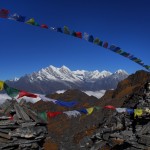 Nepal is a country that is famous over the world for its stunning cuisine, rich cultural heritage, and natural beauty that goes beyond comparison. Whether you are visiting Nepal for the first time or returning to absorb more of the multitude of pleasures that this area has to offer, your experience can be deeply enriched by taking advantage of the generous knowledge and unique insights that are available to travelers through local tours that are led by actual citizens. In contrast to simply exploring without any real destination or using faceless travel agencies, local guided tours can bring history to life in ways that no one else can due to the fact that it is part of their heritage.
Nepal is a country that is famous over the world for its stunning cuisine, rich cultural heritage, and natural beauty that goes beyond comparison. Whether you are visiting Nepal for the first time or returning to absorb more of the multitude of pleasures that this area has to offer, your experience can be deeply enriched by taking advantage of the generous knowledge and unique insights that are available to travelers through local tours that are led by actual citizens. In contrast to simply exploring without any real destination or using faceless travel agencies, local guided tours can bring history to life in ways that no one else can due to the fact that it is part of their heritage.
In addition to the advantage of exploring new areas with the help of a local guide, touring packages that are reserved in advance allow travelers to take care of the majority of their expenses upfront. This benefit allows them to concentrate on what really matter as they travel. Withlocals.com is a wonderful example of the types of experiences that deeply engage visitors in the history and culture of this region. When engaged in one of these tours, travelers will have the chance to take the mountainbike up to Kathmandu Valley, take a pilgrimage tour or experience the local Balkamari Jatra festival. There are outings that include spending time with local artists and artisans as well.
People whose taste buds are at the forefront of their minds will delight in taking a culinary tour of Nepal. Tours that focus on the exquisite and varied flavors of these eastern dishes are designed for the independent travelers who wishes to gain real insight into how life plays out on a daily basis in the area in addition to what role amazing food takes on in this context. Many of the tours that are facilitated by local citizens can also include cooking classes, allowing people to have a hands-on experience with the richness of the cuisine. There is also the opportunity to take treks through the beautiful countryside where the dishes are prominent. These experiences easily add adventure to holiday that seasoned with opportunity. Many of the culinary tours are run by local chefs, couples, or individuals who make the food that sustains them one of their main passions in life. Allowing them to share these things creates an unforgettable experience.

Take a mountainbike tour in Kathmandu Valley
]]>
 In addition to early sophisticated urban planning, the Newar people of Nepal are known for their excellent, distinct cuisine which is very much linked to their culture. In fact, sampling different Nepalese dishes is a great way to discover the lifestyle of many Nepali people. Dishes vary by region, the religious practices of the people, […]]]>
In addition to early sophisticated urban planning, the Newar people of Nepal are known for their excellent, distinct cuisine which is very much linked to their culture. In fact, sampling different Nepalese dishes is a great way to discover the lifestyle of many Nepali people. Dishes vary by region, the religious practices of the people, […]]]>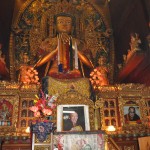 In addition to early sophisticated urban planning, the Newar people of Nepal are known for their excellent, distinct cuisine which is very much linked to their culture. In fact, sampling different Nepalese dishes is a great way to discover the lifestyle of many Nepali people. Dishes vary by region, the religious practices of the people, and geography. Some entrées are extremely spicy while others are less so but still flavourful. Culinary tours are not uncommon among tourists with adventurous palates and cultural curiosity.
In addition to early sophisticated urban planning, the Newar people of Nepal are known for their excellent, distinct cuisine which is very much linked to their culture. In fact, sampling different Nepalese dishes is a great way to discover the lifestyle of many Nepali people. Dishes vary by region, the religious practices of the people, and geography. Some entrées are extremely spicy while others are less so but still flavourful. Culinary tours are not uncommon among tourists with adventurous palates and cultural curiosity. Besides breathtaking scenery and flavourful cuisine, Nepal is home to some of the most popular mountain climbing and trekking sites in the world. The legendary Mt Everest is near, and the site draws tourists, amateur climbers, and professional mountaineers from all over the world. Tourists desiring to go trekking in the Himalayas often employ Sherpa guides to […]]]>
Besides breathtaking scenery and flavourful cuisine, Nepal is home to some of the most popular mountain climbing and trekking sites in the world. The legendary Mt Everest is near, and the site draws tourists, amateur climbers, and professional mountaineers from all over the world. Tourists desiring to go trekking in the Himalayas often employ Sherpa guides to […]]]>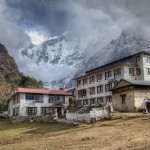 Besides breathtaking scenery and flavourful cuisine, Nepal is home to some of the most popular mountain climbing and
Besides breathtaking scenery and flavourful cuisine, Nepal is home to some of the most popular mountain climbing and 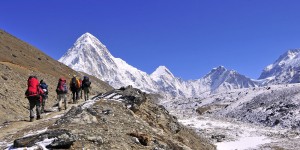 Whether one is taking a culinary tour or simply shopping at one of the bazaars, there are a myriad of ways to get around the country. Ordinary modes of travel like taxis are everywhere and culturally unique ones like rickshaws are also on hand. Because the cost of living in the country remains low, getting […]]]>
Whether one is taking a culinary tour or simply shopping at one of the bazaars, there are a myriad of ways to get around the country. Ordinary modes of travel like taxis are everywhere and culturally unique ones like rickshaws are also on hand. Because the cost of living in the country remains low, getting […]]]> Preparing for one’s first or 50th trip to Nepal is very exciting as one anticipates all there is to do and see in the country. There are some logistical hurdles that one must accomplish prior to visiting the country, but they are easily passed with the right planning, organization, and foresight. Some items of interest […]]]>
Preparing for one’s first or 50th trip to Nepal is very exciting as one anticipates all there is to do and see in the country. There are some logistical hurdles that one must accomplish prior to visiting the country, but they are easily passed with the right planning, organization, and foresight. Some items of interest […]]]>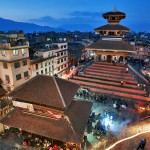 Preparing for one’s first or 50th trip to Nepal is very exciting as one anticipates all there is to do and see in the country. There are some logistical hurdles that one must accomplish prior to visiting the country, but they are easily passed with the right planning, organization, and foresight. Some items of interest to Nepal travellers include obtaining proper travel papers, packing the right gear, and understanding safety precautions specific to Nepal.
Preparing for one’s first or 50th trip to Nepal is very exciting as one anticipates all there is to do and see in the country. There are some logistical hurdles that one must accomplish prior to visiting the country, but they are easily passed with the right planning, organization, and foresight. Some items of interest to Nepal travellers include obtaining proper travel papers, packing the right gear, and understanding safety precautions specific to Nepal.